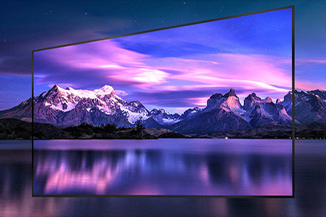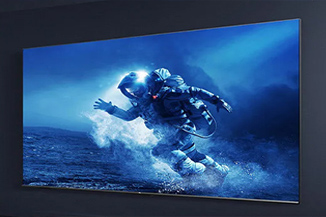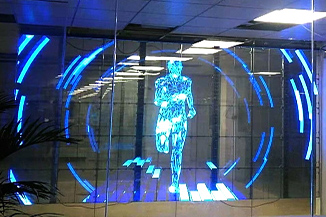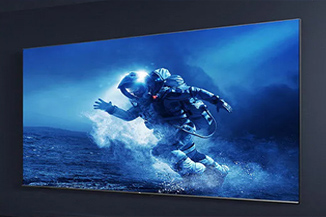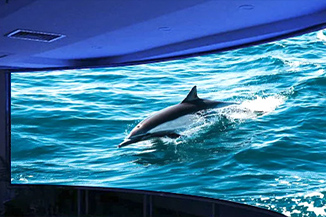Publisher: Supplier of LED Display Time: 2024-04-22 14:55 Views: 1489
The customization process of LED display screens involves many key steps. The following is a detailed customization process compiled by the editor of LCF.
1. Clarify needs and goals
First, you need to determine the main purpose and installation environment of the LED display. This determines the size, shape, brightness, resolution, and other characteristics of the display. Consider the viewing distance of the display, which affects the readability and clarity of the displayed content. For indoor or outdoor use, there are also environmental factors to consider, such as lighting conditions, water and dust resistance, and other properties. details as follows:
•Application scenarios: Determine the environment in which the LED display will be used, such as indoors (conference rooms, exhibition halls, shopping malls, TV stations, etc.), outdoor (squares, building exterior walls, billboards, etc.) or special environments (stages, concerts, etc.) , sports events, etc.).
•Display content: Consider whether the text, charts, static images, or high-definition videos, dynamic images, etc. that need to be played are mainly displayed.
•Viewing distance: Choose an appropriate dot spacing (pixel pitch) based on the viewer's expected distance from the screen to ensure clarity.
•Dimensional specifications: measure the space size of the installation location, determine the length and width of the display screen, and possible shapes (such as regular rectangle, special-shaped screen, curved screen, etc.).
•Functional requirements: Do you need special functions such as interactive functions, remote control, multi-screen synchronization, 3D display, naked-eye 3D, HDR, etc.
•Environmental factors: Consider the lighting conditions of the installation environment, climatic conditions (such as temperature, humidity, dustproof, rainproof, lightning protection and other protection level requirements), power supply, installation method (wall-mounted, ceiling-mounted, embedded, etc.), etc.
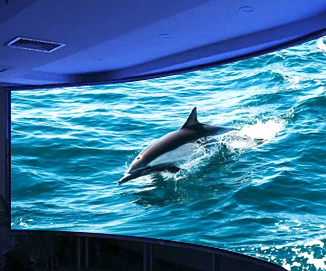
2. Choose the right LED screen
Choose the right screen size, shape and resolution based on your needs. Consider parameters such as screen brightness, contrast, and color gamut to ensure good visual effects in different environments. If you need to display high-definition video or images, a higher resolution will provide a clearer, more realistic image. details as follows:
•Point spacing: Select the appropriate point spacing (such as P1.25, P2, P2.5, P3, P4, P5, P6, etc.) according to viewing distance and clarity requirements.
•Display technology: such as SMD surface mount, COB integrated packaging, direct plug-in, GOB packaging, Micro/Mini LED, etc.
•Screen structure: such as conventional fixed installation screen, rental screen (quick installation and disassembly), transparent screen, flexible screen, grille screen, film screen, holographic screen, spherical screen, etc.
•Color type: single color, dual color, full color (1R1G1B, 2R1G1B, 3-in-1 SMD, etc.).
3. Design unique content
Design the content of the display screen according to the purpose, including images, text, animation, etc. You can take help from a professional designer to ensure your content is both on-brand and engaging. details as follows:
•Communicate with LED display manufacturers: Describe the requirements in detail, and the supplier will provide a preliminary design plan based on the requirements, including display model, size, installation method, control system, etc.
•Drawing confirmation: Review and confirm design drawings, renderings and structural drawings to ensure compliance with the installation environment and expected effects.
•Confirmation of technical parameters: Verify technical indicators such as brightness, grayscale, refresh rate, contrast, viewing angle, and protection level.
3. Consider interactivity and creativity
To increase audience participation and experience, consider adding interactive devices such as touch screens and sensors.
Creative special effects and animations can also make the display more attractive.
4. Choose the appropriate bracket and installation method
Choose the appropriate bracket and installation method according to the size of the display and the installation environment.
Make sure the display can be firmly and stably fixed to the wall or floor, taking into account safety considerations.
5. Communicate with manufacturers and customize
Find a reliable LED display manufacturer or supplier, such as LCF LED display manufacturer, and communicate with them about your needs and customization requirements.
Provide detailed design plans and parameters to ensure that the manufacturer can accurately understand your needs.
Negotiate details such as price, delivery time, etc. with merchants and sign a formal contract. The supplier carries out production and manufacturing in accordance with the confirmed design plan to ensure that product quality meets the contract.
6. Installation, testing and debugging
Test and debug the customized LED display before official use. Check whether the display effect, brightness, color and other parameters of the display screen meet the requirements. Make sure all functions are functioning properly and there are no glitches or issues.
Please note that when customizing an LED display, don't just look at the price. High-quality products tend to have better performance and longer service life. At the same time, communication with LED display manufacturers is also very important to ensure that they can accurately understand your needs and provide satisfactory solutions. The details are as follows: |
•On-site investigation: Engineers go to the installation site to conduct inspections and confirm installation conditions, power supply, signal access and other matters.
•Installation and construction: Perform screen installation, wiring, fixing and other work according to the predetermined plan.
•System debugging: Connect the control device to perform system settings, color correction, brightness adjustment, playback content testing, etc. to ensure the normal operation of the display.
7. Training and acceptance
•Operation training: Provide users with training on display operation, daily maintenance, troubleshooting, etc.
•Project acceptance: The user will conduct a comprehensive acceptance of the installation effect, display effect, system stability, etc., and sign for confirmation after confirming that it meets the customization requirements.
8. After-sales service
•Warranty service: Suppliers provide a certain period of product warranty, including free maintenance, replacement of parts, etc.
•Technical support: Provide necessary technical support and consulting services during or outside the warranty period.
Through the above steps, you can customize a suitable LED display according to your own needs and ensure that you receive professional and satisfactory services throughout the entire process from design, production to installation and after-sales. During the customization process, it is crucial to maintain good communication with suppliers to ensure that requirements are accurately communicated and implemented.
The above is a summary of the relevant knowledge on LED display customization compiled by the editor of LCF. I hope it will be helpful to you, and you are welcome to add or correct it. Lianchengfa (LCF) is a national-level professional and innovative "little giant" enterprise, an LED display application and solution provider integrating "hardware + software + content + interaction". If you want to buy an LED display, you can also directly contact LCF LED display manufacturer, a big brand and trustworthy!
